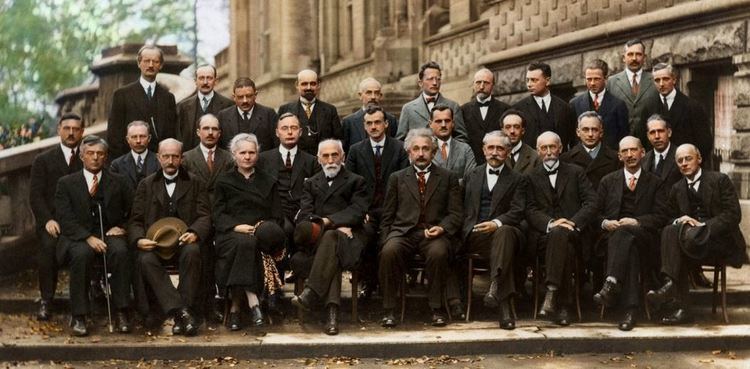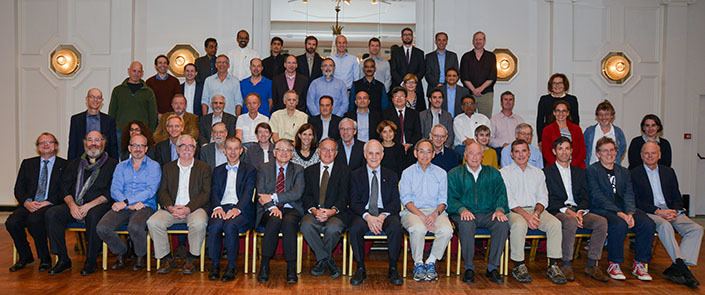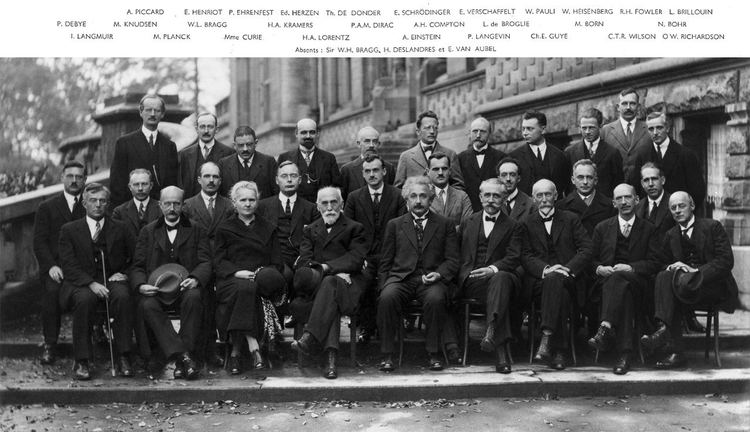 | ||
The International Solvay Institutes for Physics and Chemistry, located in Brussels, were founded by the Belgian industrialist Ernest Solvay in 1912, following the historic invitation-only 1911 Conseil Solvay, considered a turning point in the world of physics. The Institutes coordinate conferences, workshops, seminars, and colloquia.
Contents

Following the initial success of 1911, the Solvay Conferences (Conseils Solvay) have been devoted to outstanding preeminent open problems in both physics and chemistry. The usual schedule is every three years, but there have been larger gaps.

Solvay conference
First Conference

Hendrik A. Lorentz was chairman of the first Solvay Conference held in Brussels in the autumn of 1911. The subject was Radiation and the Quanta. This conference looked at the problems of having two approaches, namely the classical physics and quantum theory. Albert Einstein was the second youngest physicist present (the youngest one was Lindemann). Other members of the Solvay Congress included such luminaries as Marie Skłodowska-Curie and Henri Poincaré. (See image for attendee list.)
Third Conference

The first Solvay Conference following World War I was held in April 1921. Most German scientists were barred from attending. In protest at this action, Albert Einstein, himself a citizen and a vocal supporter of the infant Weimar Republic, declined his invitation to attend the conference where most of his countrymen were barred.
Fifth Conference

Perhaps the most famous conference was the October 1927 Fifth Solvay International Conference on Electrons and Photons, where the world's most notable physicists met to discuss the newly formulated quantum theory. The leading figures were Albert Einstein and Niels Bohr. 17 of the 29 attendees were or became Nobel Prize winners, including Marie Curie, who alone among them, had won Nobel Prizes in two separate scientific disciplines.

This conference was also the culmination of the struggle between Einstein and the scientific realists, who wanted strict rules of scientific method as laid out by Charles Peirce and Karl Popper, versus Bohr and the instrumentalists, who wanted looser rules based on outcomes. Starting at this point, the instrumentalists won, instrumentalism having been seen as the norm ever since, although the debate has been actively continued by the likes of Alan Musgrave.
P. Debye, M. Knudsen, W.L. Bragg, H.A. Kramers, P.A.M. Dirac, A.H. Compton, L. de Broglie, M. Born, N. Bohr;
I. Langmuir, M. Planck, M. Skłodowska-Curie, H.A. Lorentz, A. Einstein, P. Langevin, Ch.-E. Guye, C.T.R. Wilson, O.W. Richardson
